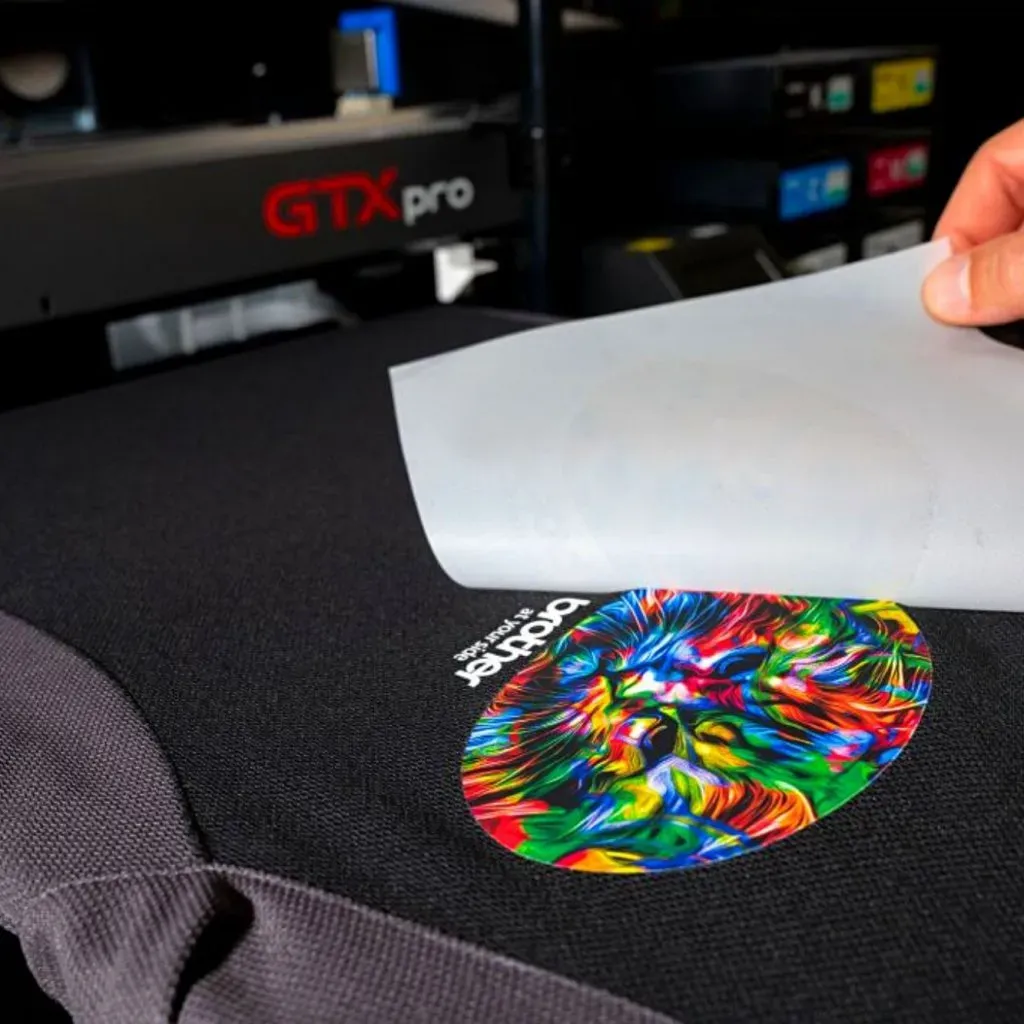DTF printing, or Direct-To-Film printing, is revolutionizing the printing landscape, particularly in garment decoration. This cutting-edge technology allows for high-resolution designs to be printed onto a special film, which are then transferred to fabric, producing exceptional print quality that is rich in color and detail. Among the numerous DTF printing advantages, its versatility combined with cost-effective printing solutions positions it as a preferred method for many businesses today. As the DTF market growth continues to accelerate, we observe an increasing number of applications, ranging from custom apparel to promotional materials. This blog post will delve into the innovative aspects of DTF printing technology, shedding light on its transformative impact and promising future in the printing industry.
Known as Direct-To-Film technology, DTF printing is gaining traction as a formidable alternative in the printing sector. This approach enables the transfer of intricate designs onto a variety of fabrics, ensuring vibrant and long-lasting prints that meet diverse consumer demands. The benefits of DTF printing, including its cost-effectiveness and flexibility, are attracting small to medium-sized businesses looking to enhance their product offerings without incurring significant expenses. As we examine the landscape of modern printing solutions, DTF technology stands out, promising substantial growth and applicability in various markets. This exploration will highlight the advancements and potential challenges that define the future of this innovative printing method.
What is DTF Printing and How Does it Work?
Direct-To-Film (DTF) printing represents a groundbreaking technique in the world of garment printing, allowing designers and businesses to transfer high-quality images directly onto fabrics. The DTF process begins with printing designs onto a specialized film using high-resolution printers equipped with advanced ink technologies. The printed film is then combined with a transfer adhesive powder, which is melted onto the film via heat application. This enables the vibrant, detailed images to be seamlessly transferred onto various textiles, resulting in stunning, durable prints that stand out in today’s saturated market.
Unlike traditional printing methods such as Direct-To-Garment (DTG) or screen printing, DTF printing is renowned for its versatility, allowing for printing on a wide range of materials, including cotton, polyester, and blended fabrics. This flexibility in application makes DTF especially attractive to businesses that prioritize diverse product offerings. By utilizing this innovative method, companies can cater to both high-volume orders and personalized, small-batch custom prints, accommodating a growing demand for unique and custom apparel.
The Advantages of DTF Printing
DTF printing technology comes with numerous advantages, positioning it as a superior choice for modern garment production. One of its most significant benefits is the ability to produce high-resolution prints with vibrant colors. DTF printers utilize specialized inks that adhere well to a variety of fabrics, ensuring that the final product not only looks visually appealing but is also capable of withstanding high wash cycles without fading. This quality makes DTF an excellent option for promotional merchandise and fashion items that require longevity.
Moreover, DTF printing is known for its cost-effectiveness. With lower setup costs compared to traditional methods, businesses can reduce their financial barriers to entry, making it an accessible choice for startups and smaller enterprises. As the prices for DTF printing equipment continue to decrease, the technology is becoming increasingly appealing to a wider audience, enabling companies to innovate without overstretching their budgets.
Exploring DTF Market Growth
The DTF printing market has witnessed impressive growth in recent years, driven by its increasing adoption among a diverse range of businesses. According to industry forecasts, the DTF market is projected to expand significantly, propelled by the demand for customizable and high-quality printing solutions across various sectors. Small to medium-sized businesses are particularly drawn to DTF for its flexibility and ability to meet customer needs without the drawbacks associated with more traditional printing methods.
As consumers continue to seek personalized products, the shift towards DTF technology aligns perfectly with retail trends, focusing on customization and fast turnaround times. This demand for tailored apparel is fueling the market, making DTF printing a pivotal player in the future of garment decoration. Embracing DTF technology allows companies to remain competitive, respond effectively to consumer trends, and explore fresh opportunities within the ever-evolving fashion landscape.
Technological Innovations in DTF Printing
Recent technological innovations have dramatically enhanced the capabilities of DTF printing, pushing the boundaries of what can be achieved in garment decoration. Newer printer models are equipped with faster print speeds and advanced ink formulations designed to produce superior print quality and durability. For instance, some models integrate eco-friendly inks that address sustainability concerns while meeting consumer preferences for environmentally responsible choices. This advancement not only boosts the appeal of the final product but also aligns businesses with modern ethical standards.
Moreover, the introduction of automation and artificial intelligence into the DTF printing process is set to revolutionize efficiency and productivity. Automation streamlines the workflow, minimizes the risk of errors, and ensures faster turnaround times for orders. As businesses adopt these innovations, they can enhance their production capabilities, allowing them to scale operations effectively without compromising on quality, which is essential in today’s fast-paced market.
DTF Printing Applications Beyond Apparel
DTF printing is not limited to garment decoration; it has a wide range of applications that extend beyond clothing. Its adaptability allows businesses to print on various promotional items such as bags, caps, and home textiles, creating unique products that appeal to a broad customer base. This versatility means that businesses can diversify their offerings and tap into new markets by using DTF technology to create customized items for events, brands, and personal use.
In addition to textiles, the DTF printing process can also be applied to non-textile substrates, providing further avenues for businesses to explore. This expansion into different materials increases the potential customer base and opportunities for personalized merchandise. The ability to cater to both textile and non-textile products makes DTF printing an excellent choice for businesses aiming to increase brand visibility and consumer engagement in diverse sectors.
Navigating Challenges in DTF Printing
While DTF printing boasts significant benefits, businesses must also address certain challenges to fully capitalize on this technology. A common issue is the need for careful quality control to prevent problems like peeling or cracking of prints after application. Companies should implement robust quality assurance measures throughout their production process to ensure that each item meets high standards of durability and aesthetics.
Furthermore, investing in proper training for employees is crucial. Understanding how to operate DTF printers and manage the printing process effectively can significantly impact the quality of the output. As DTF printing technology evolves, staying updated with best practices and troubleshooting techniques will be vital for businesses seeking to maintain a competitive edge in the market.
Frequently Asked Questions
What are the advantages of DTF printing over traditional printing methods?
DTF printing offers several key advantages over traditional methods, including exceptional print quality, versatility in applications, and cost efficiency. Unlike screen printing, DTF allows for high-resolution designs and vibrant colors on a variety of materials, making it an attractive option for garment decorators. Additionally, DTF printing has lower setup costs, making it accessible for small to medium-sized businesses.
How is Direct-To-Film technology reshaping the garment decoration industry?
Direct-To-Film technology is revolutionizing the garment decoration industry by providing a printing method that allows for quick production of high-quality prints. The ability to print on various substrates and the economical nature of DTF printing have made it a popular choice among businesses looking to meet diverse customer demands while minimizing costs.
What impact is DTF printing having on the printing market growth?
DTF printing is significantly impacting printing market growth, particularly among small to medium-sized enterprises. Its growing popularity is driven by its flexibility and cost-effectiveness, enabling businesses to take on both small and large production runs while maintaining high-quality outputs. This has resulted in substantial market expansion and adoption across multiple sectors.
What are the potential applications of DTF printing?
The potential applications of DTF printing are vast, covering not only apparel and clothing but also promotional merchandise and specialized non-textile products. This versatility allows businesses to cater to a wide range of consumer needs, offering customized designs for small orders and efficient production capabilities for larger runs.
Why is DTF printing considered a cost-effective printing solution?
DTF printing is considered a cost-effective printing solution due to its lower setup costs compared to traditional methods like screen printing. As DTF printer prices and material costs continue to drop, small businesses can adopt this technology without significant financial burdens, leading to lower overhead costs and higher profitability.
What are the challenges businesses face with DTF printing technology?
Businesses utilizing DTF printing technology face challenges such as ensuring quality control to prevent issues like peeling or cracking of prints. Additionally, proper training for staff is essential for effective operation and to maximize the benefits of the technology. Implementing robust quality control measures is crucial for maintaining high output standards.
| Key Point | Description |
|---|---|
| Market Growth and Adoption | Increasing acceptance among businesses, projected market growth, and flexibility in color management. |
| Technological Advancements | Enhancements in printer efficiency, print quality, and eco-friendly ink developments. |
| Cost Efficiency | Lower setup costs compared to traditional methods, making it accessible for startups. |
| Applications and Flexibility | Versatile for various applications including apparel and promotional products. |
| Challenges and Considerations | Importance of quality control and proper personnel training is essential. |
| Future Outlook | Predicted advancements in automation and integration of AI to enhance productivity. |
Summary
DTF printing is rapidly emerging as a transformative technology in the garment decoration industry. With its cost-effectiveness, exceptional print quality, and versatility across various applications, DTF printing presents an innovative solution for businesses seeking to remain competitive in a dynamic market. As the technology evolves and is adopted by more enterprises, it will play a vital role in shaping the future landscape of printing solutions, fostering creativity and efficiency across industries.



